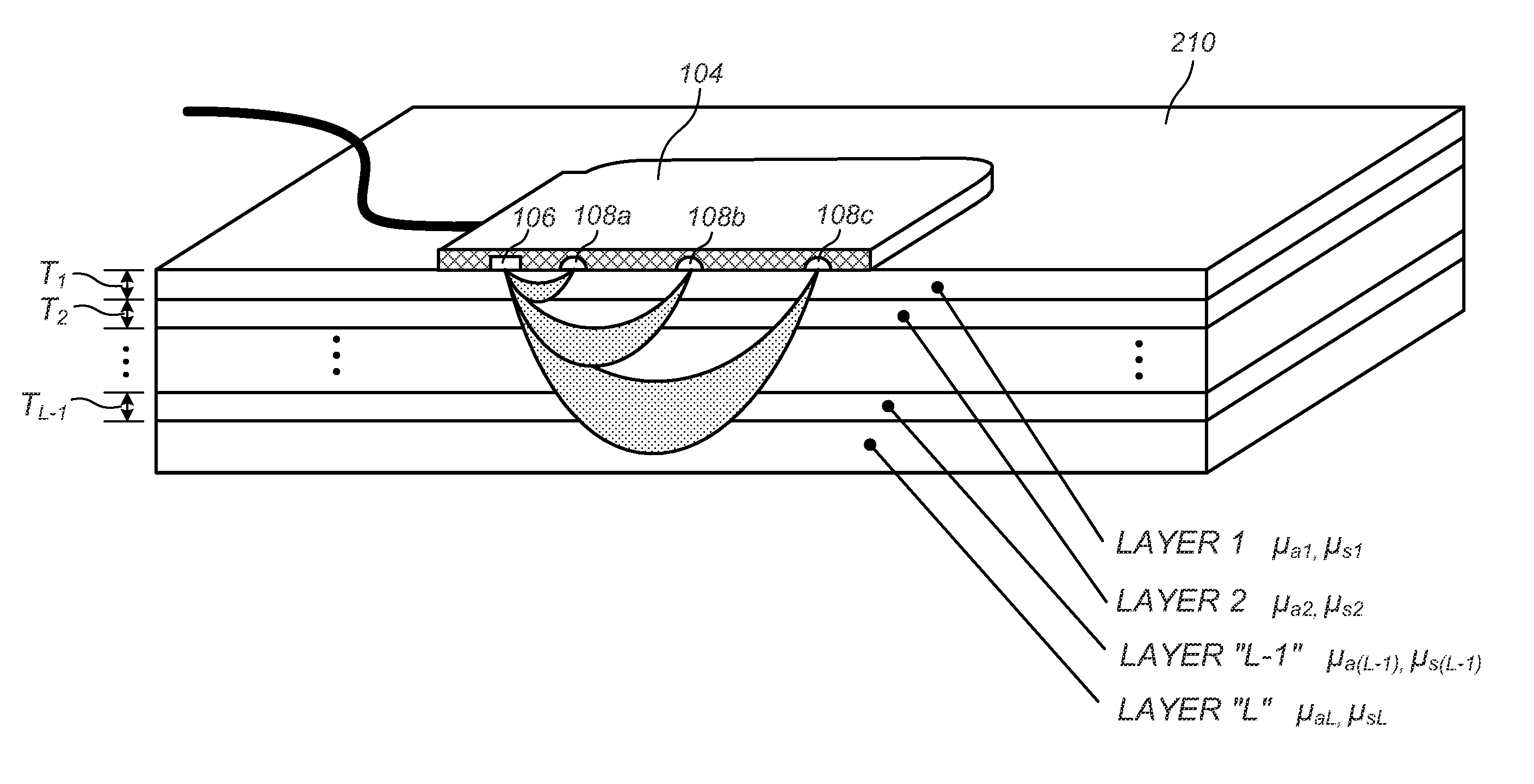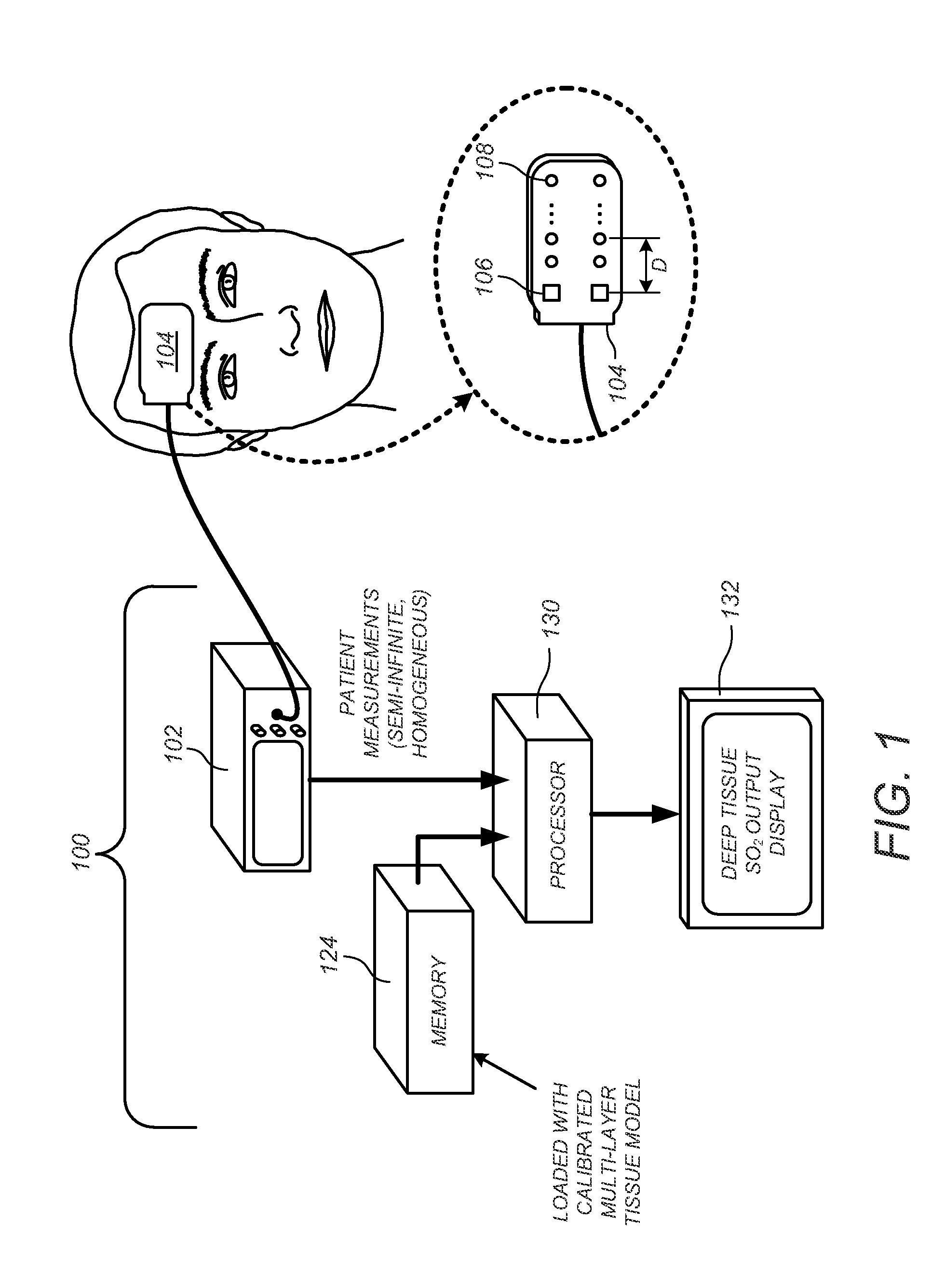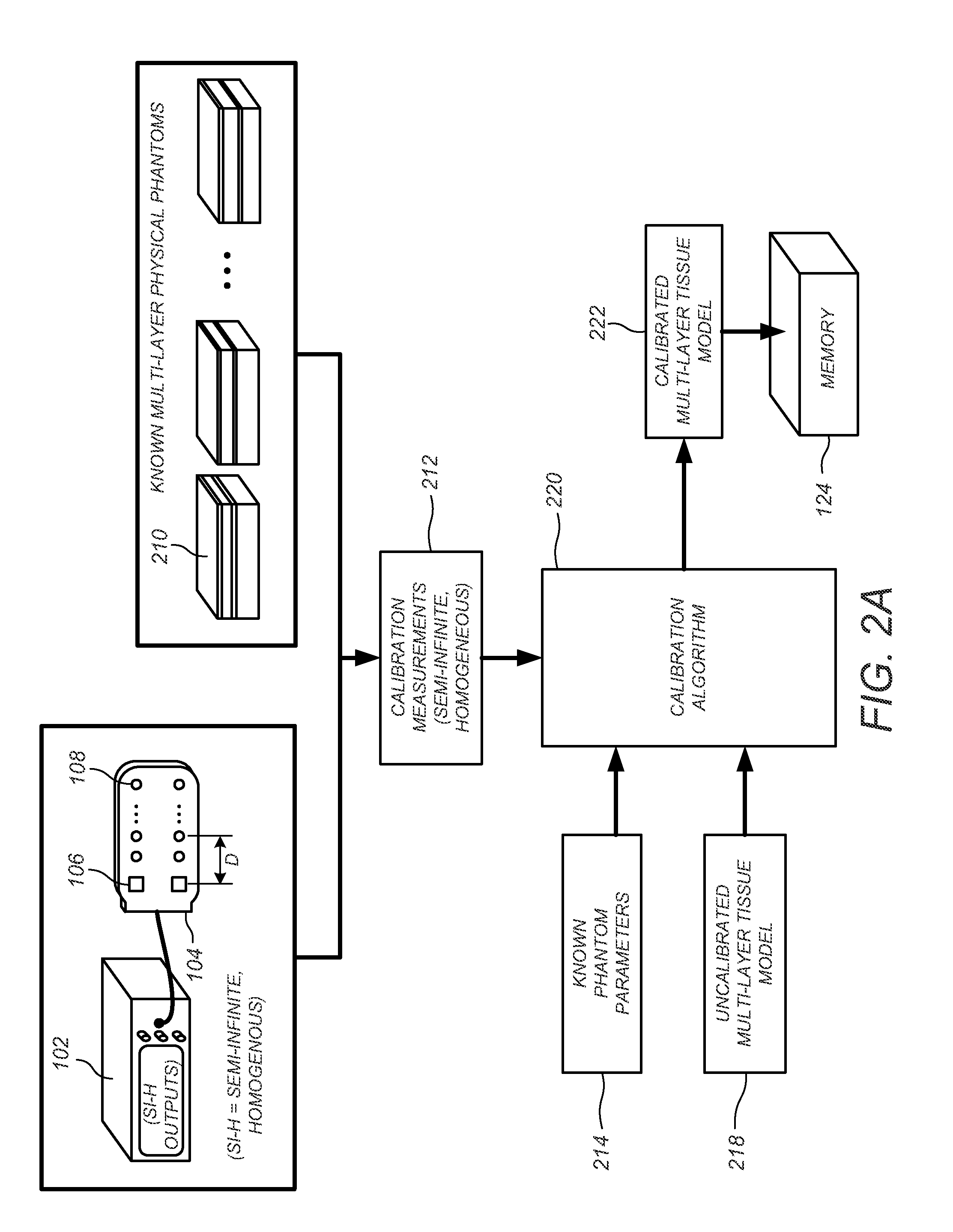Spectrophotometric Monitoring Of Multiple Layer Tissue Structures
a tissue structure and spectrophotometric technology, applied in the field of non-invasive monitoring, can solve the problems of not providing a measure of oxygen levels in vital organs such as the brain, the potential of insufficient oxygen delivery to the brain, and the least amount of brain damag
- Summary
- Abstract
- Description
- Claims
- Application Information
AI Technical Summary
Benefits of technology
Problems solved by technology
Method used
Image
Examples
Embodiment Construction
[0039]As used herein, the terms “top layer(s),”“outer layer(s)”, and “surface layer(s)”, are generally used to refer to the one or more “non-interesting” or “non-vital” tissue layers that intervene between the NIR probe patch and the “interesting” tissue. As used herein, the term “deep layer” refers to the “interesting” tissue that is disposed beneath the top / outer / surface tissue layer(s) relative to the NIR probe patch. For two-layer tissue models, the “deep layer” may also be referenced as the “bottom layer.” However, it is to be appreciated that the term “deep layer,” as used herein, does not necessarily refer to the anatomically deepest part of the body part under study relative to the skin surface. For example, in renal oxygenation level monitoring, the kidney represents the “deep layer” as that term is used herein, even though there are other internal tissues that lie anatomically deeper than the kidney relative to the skin surface. Due to the high signal losses generally asso...
PUM
 Login to View More
Login to View More Abstract
Description
Claims
Application Information
 Login to View More
Login to View More - R&D
- Intellectual Property
- Life Sciences
- Materials
- Tech Scout
- Unparalleled Data Quality
- Higher Quality Content
- 60% Fewer Hallucinations
Browse by: Latest US Patents, China's latest patents, Technical Efficacy Thesaurus, Application Domain, Technology Topic, Popular Technical Reports.
© 2025 PatSnap. All rights reserved.Legal|Privacy policy|Modern Slavery Act Transparency Statement|Sitemap|About US| Contact US: help@patsnap.com



